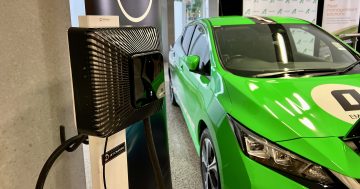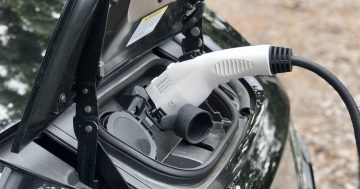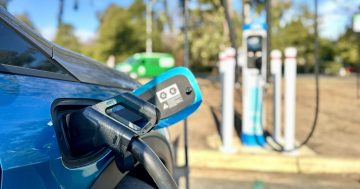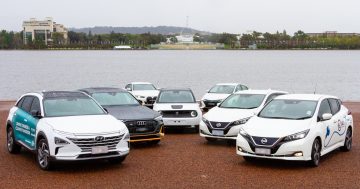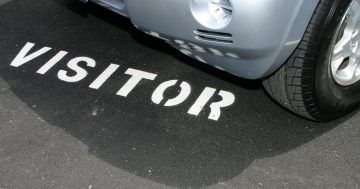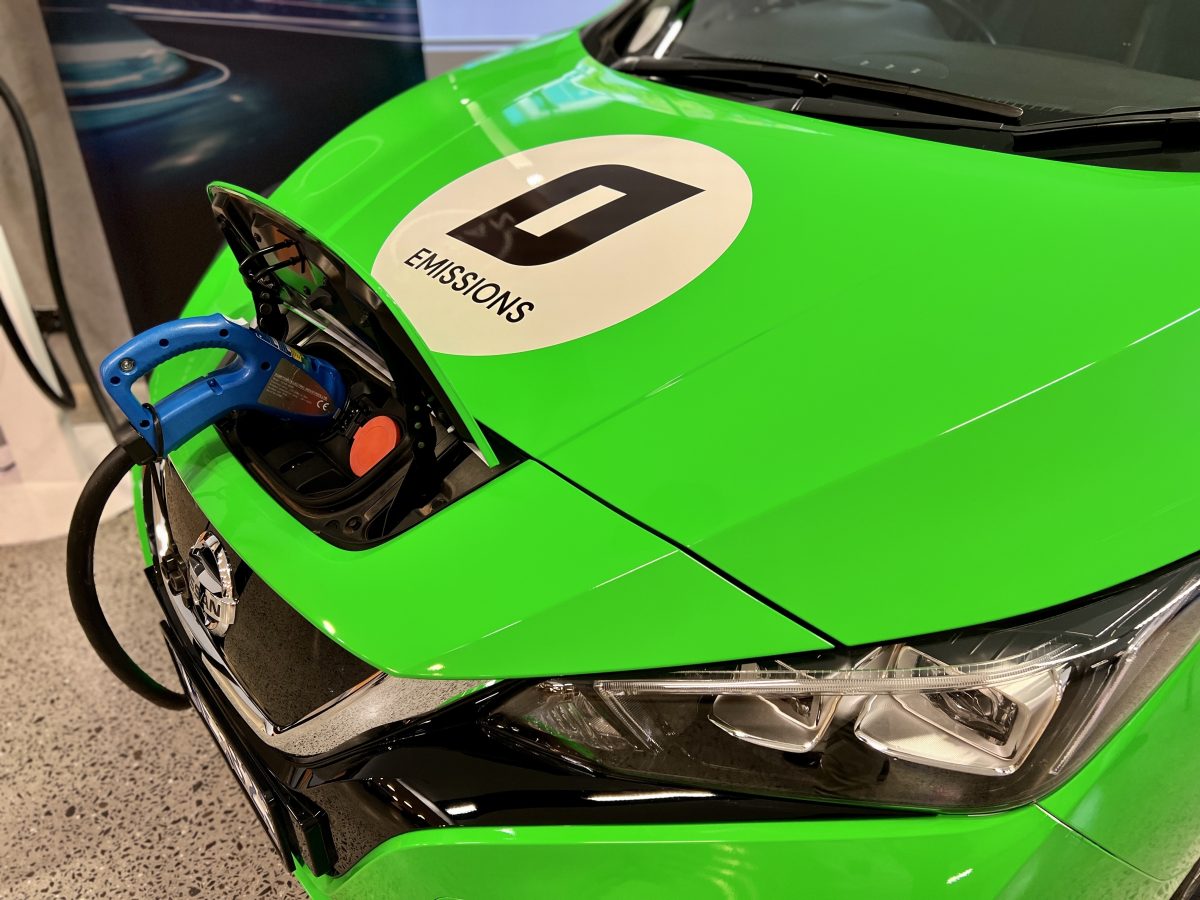
ActewAGL recently concluded a Vehicle-to-Grid (V2G) trial with help from Nissan, JET Charge and the ANU. Photo: James Coleman.
It’s no news the ACT Government is pushing hard on its commitments to tackle climate change, with the Territory committed to net zero emissions by 2045 and the sale of new fossil fuel cars will be banned from 2035.
Electric vehicles (EVs) are also cheaper here than anywhere else in the country due to a combination of no stamp duty, free registration for two years, and – from 1 July 2024 – emission-based registration fees.
Canberrans have dutifully responded to the point where one in five new vehicles is electric. That’s triple last year’s ratio.
But there is a hurdle: infrastructure. It was raised in a submission to the ACT Government’s recent ‘Inquiry into electric vehicle (EV) adoption’ by Civium Strata Management.
Alex Boundy is a licenced electrician and general manager for the Facilities Management arm of the Civium Property Group, helping manage buildings all over Canberra. He says government policies are “great” and developers and businesses will respond with solutions, but the process can’t be rushed.
He says too many local EV owners are pressured by salespeople to simply slap a charger on the wall of their private car space, with little thought to the building’s future energy needs.
“It’s no different to a budget,” he explains.
“If you’ve got $100 and you spend all of it, you’ve got nothing left over for a rainy day. Translate the dollar figures to amperage, and if you go and install an EV charger station which runs at 100 amps, you’re already at capacity, so to get anything additional, it’s going to be big money. And that’s without knowing if the energy supply authority will give you that, or if it’s even available on your street.”

Alex Boundy, General Manager for Civium Facilities Management. Photo: Michelle Kroll.
It’s already a problem in built-up areas such as Kingston or Woden, where the street’s substations are running at capacity. For instance, to charge up Transport Canberra’s new electric buses, Evoenergy has to run 12 kilometres of new cable from the Wanniassa Zone substation.
And with the clock ticking on the city’s gas pipelines in accordance with the government’s policy for no gas by 2045, more and more electrical appliances will place greater demand on the grid.
“With everything going electric, there has to be some serious consideration of how the infrastructure can support that to avoid us struggling in peak times like South Australia did,” Alex says.
“We need heaps of electricity.”
The technology is emerging – in the forms of ‘vehicle-to-grid’ (V2G) systems and batteries – but in the meantime, Alex encourages body corporates and owners corporations to take a more thoughtful approach when considering the installation of EV chargers.
“Have a true understanding of what you’re building uses and when and where it’s used,” he says.
“We can work with electrical engineering firms to log data over set periods and get an understanding of the building’s usages. We compare that to the maximum demand calculations from the building’s construction and the sizes of the incoming cables and associated switch gear to truly work out what additional capacity we have to play with.”
The process costs between $3000 and $10,000, depending on the size of the building and level of investigation required, but Alex says it saves money in the long run.
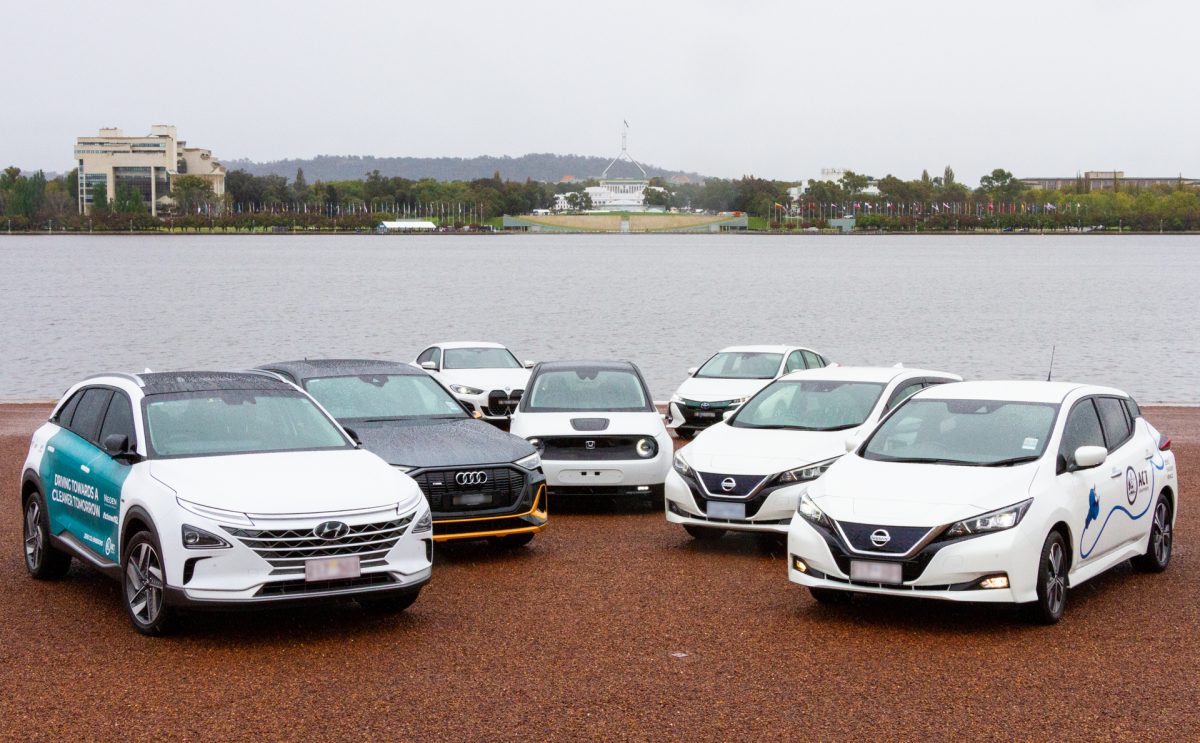
Electric vehicles now comprise one in five new cars registered in the ACT. Photo: James Coleman.
“Take a breather, get the actual analytical data and then be a well-educated owners corporation before you go to market,” he says.
From here, some elect to hold a vote among residents to find out who is likely to buy an EV in the next five years before settling on a communal charger as the best return on investment. For others, it’s about allocating money in future budgets for installing chargers later.
Ultimately, Alex expects the future of EV charging will follow the service-station model, with more communal and fewer private chargers.
“If I were to crystal ball it, there needs to be a big public charging network for EVs to be successful,” he says.
“The whole psych has to change, particularly the position of owning an EV means you have to be able to charge it in your own car space.”













